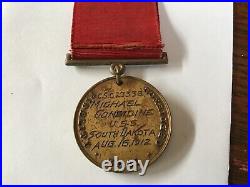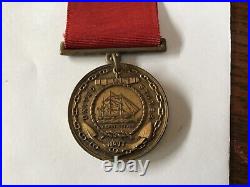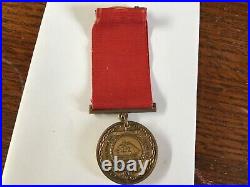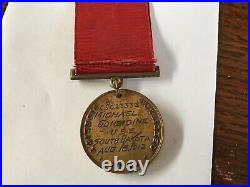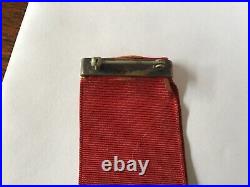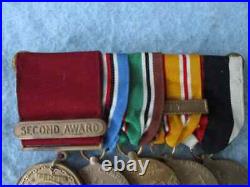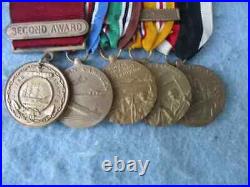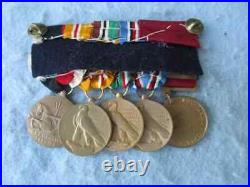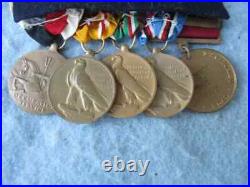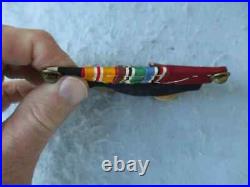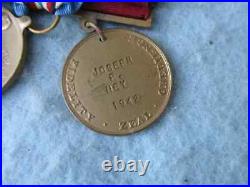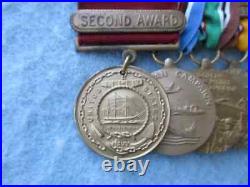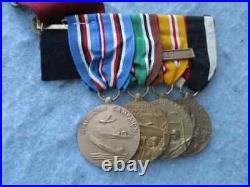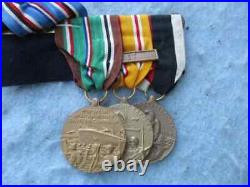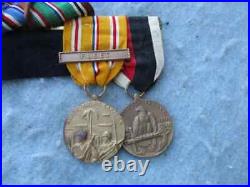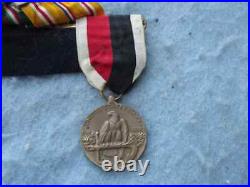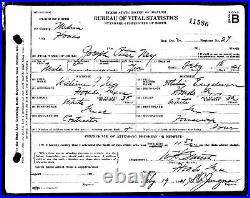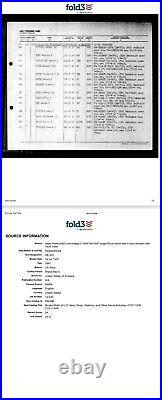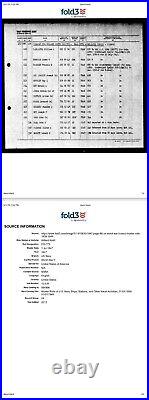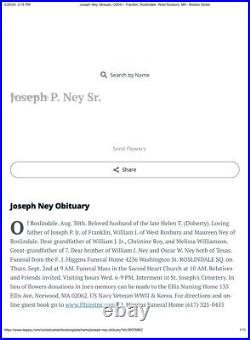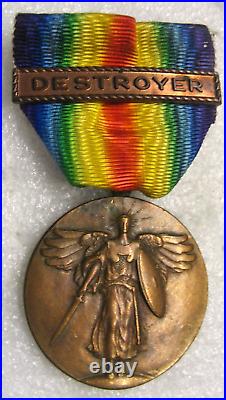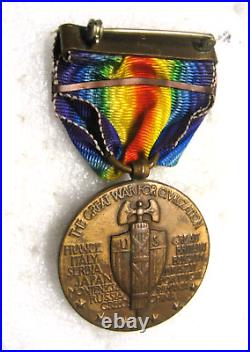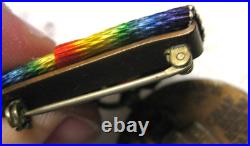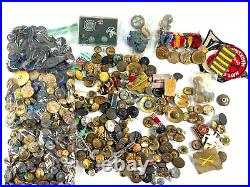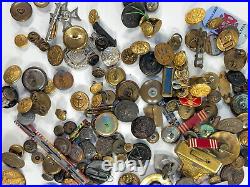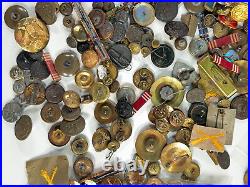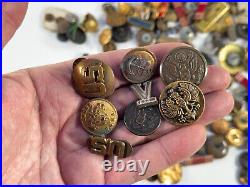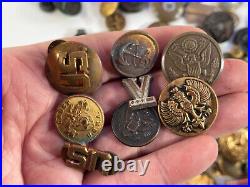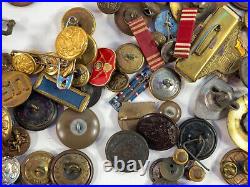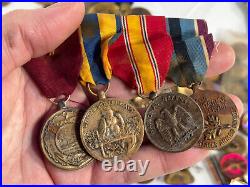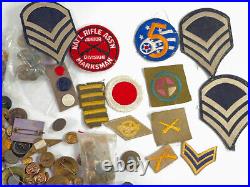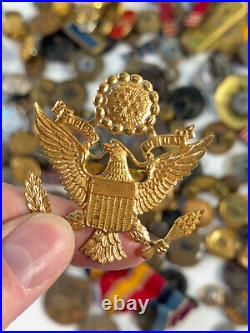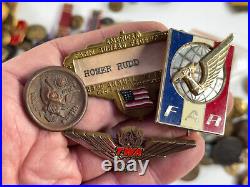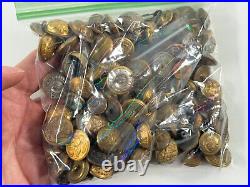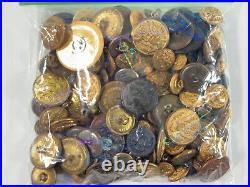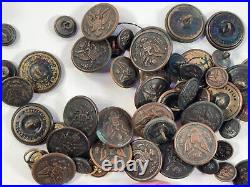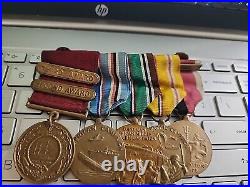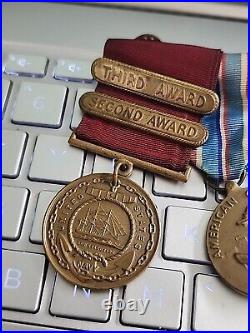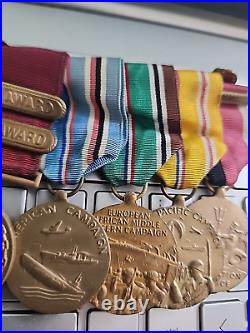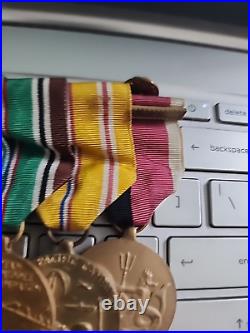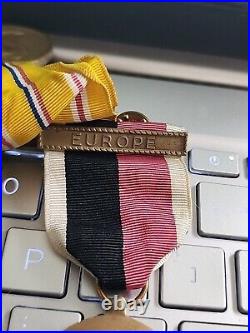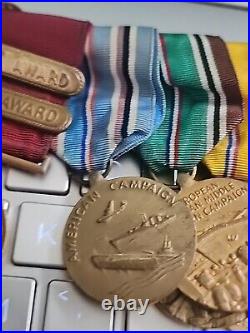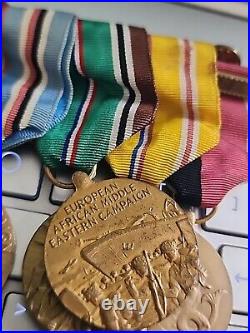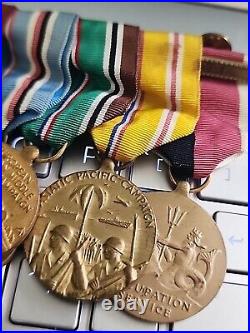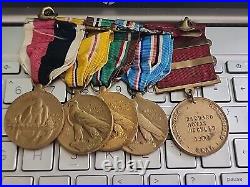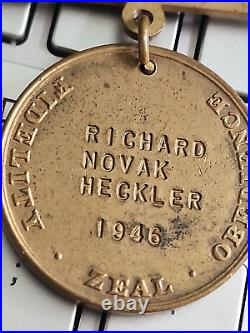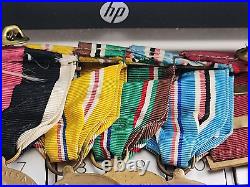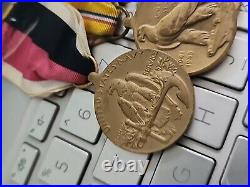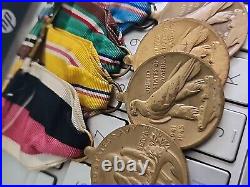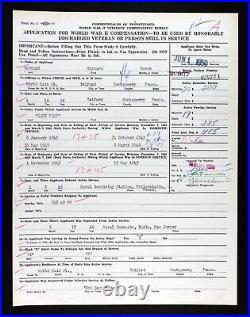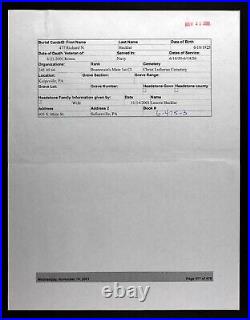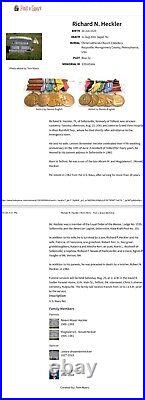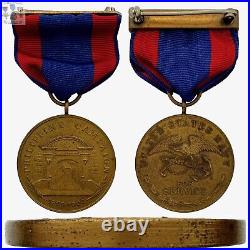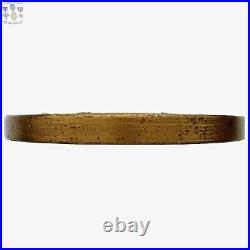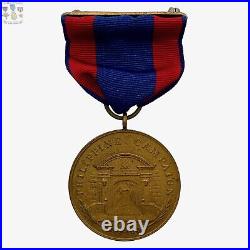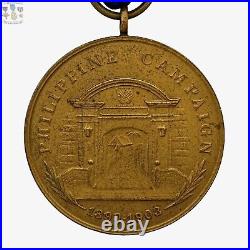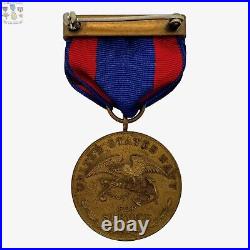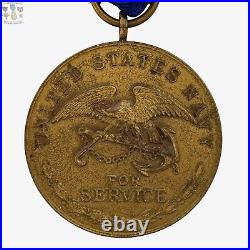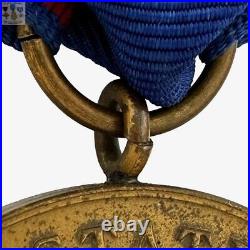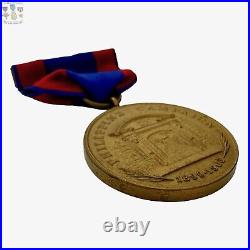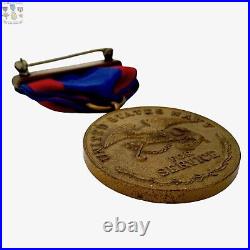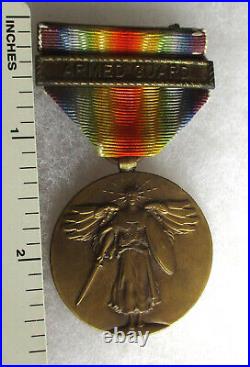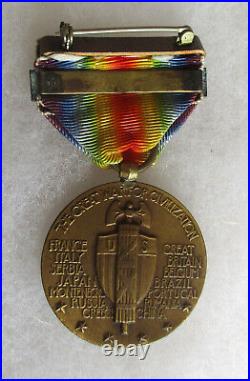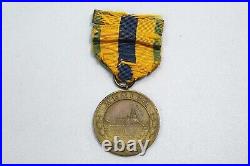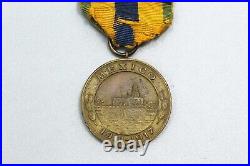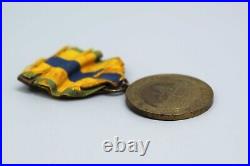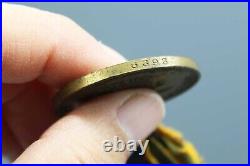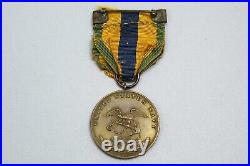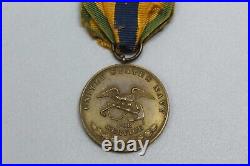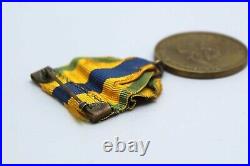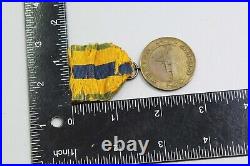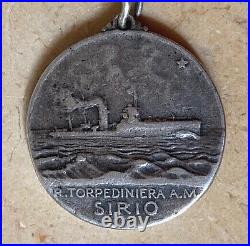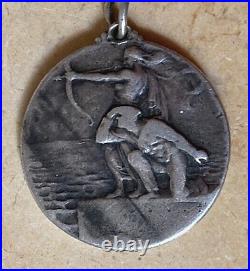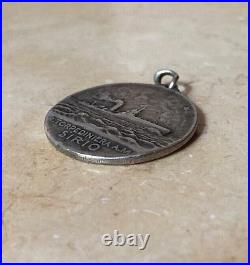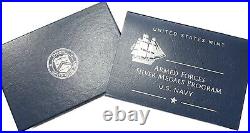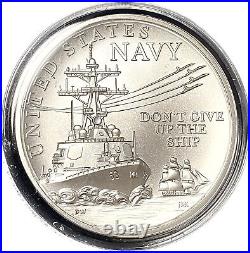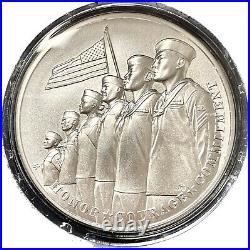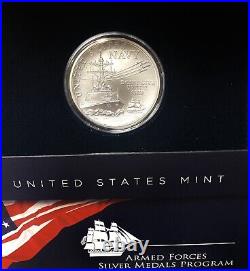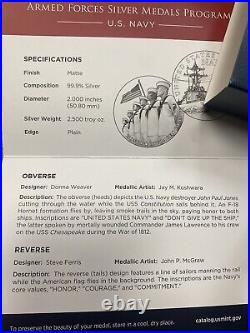Posts tagged navy
PLEASE FOLLOW OUR E BAY STORE. SALE SEE OUR STORE. PLEASE READ WHOLE ADD. World War II US Navy 5 Medal Bar. The Includes Named Good Conduct Medal engraved Joseph P Ney, 1942 with Bar for 2nd Award. The sailor had to complete a 4 year hitch from 1938 to 1942 in order to earn this. He demonstrated Fidelity, Zeal and Obedience. The enlistment span encompassed the time leading up to and early WWII Service: 1941 – 1942. Also included are all 3 Campaign Medals and the Navy Occupation Medal. The Pacific Theater has a Fleet Bar, originally intended on the American Defense Pearl Harbor Medal Ney would have earned serving from 1938 to 1942. A Victory Medal was not included, and most likely was included in a second row of Medals. As for the American Defense Medal, he might not have put in for it, especially if he was at sea with the fleet. The WWII USN 5 Medal Bar with the Named Good Conduct Medal is in fair condition and is 79 years old. World War II US Navy Medals & Ribbons. US Navy Medal Bar: Named USN Good Conduct Medal, 3 Campaign Medals, 1 Fleet Bar, Occupation. 5 Medals mounted on clutch back Parade Dress Medal Bar, dimpled clutches. Navy Good Conduct with 2nd Award Bar, American, European, Pacific Theater Medals, Navy Occupation Medal. Pacific Theater has Fleet Bar; this actually should be applied to American Defense Pearl Harbor Medal. No Victory Medal despite Navy Occupation Medal. Ribbons have bright clean colors, Medal Patinas are mostly bright. All information including Bars are legible. Tarnishing to the European Theater and Asia. American Theater has some light spotted oxidations, all medals and bars have some natural darking. Good Conduct Awarded for Fidelity, Zeal, Obedience. Potential for Provenance: WWII US Navy, Joseph P Ney, Medal Engraved 1942. Medal Bar measures 4 x 3 inches. Thank you for your interest! Background: The Medals as arranged are in correct order. There would be an American Defense Medal after the Good Conduct, and a Victory before the Occupation. The Navy Good Conduct was for Fidelity, Zeal, Obedience and awarded for completion of a 4 year enlistment, the American Theater was for service in the lower 48 States in training, as training cadre, service at ports, bases, airfields and stations, harbor, coastal and anti aircraft defense, recruitment, instructional positions at schools, colleges, universities and interfacing with Defense contractors. The European Theater was for service in North Africa, Sicily, Italy, United Kingdom, the Continent, Greenland, Iceland and Atlantic. The Occupation Medal was for Naval Occupation Duty in Japan or Europe. This Medal Bar follows Valor Medals and precedes foreign decorations as well as the Korean and Vietnam Wars. It is appropriate for Enlisted Sailors, most likely a Chief Petty Officer in this case, or for Officers up from the ranks.
PLEASE FOLLOW OUR E BAY STORE. SALE SEE OUR STORE. PLEASE READ WHOLE ADD. For your consideration is this original & authentic World War II, U. Navy Good Conduct Medal, named and dated, with two (2) subsequent award clasps, and four campaign & occupation medals. Navy Good Conduct Medal is named to’RICHARD NOVAK HECKLER’ and dated’1946. This medal has two subsequent award clasps. Also, an American Campaign Medal, an European-African-Middle Eastern Campaign Medal, an Asiatic-Pacific Campaign Medal, and, lastly, the Navy Occupation Medal with’EUROPE’ clasp. The medals show honest wear and tear, and some of the ribbons show slight fade and slight soiling.
BAIL RING IS CUT ON REVERSE SIDE AT THE 3:00 POSITION AS EXPECTED W/ A U. RIBBON DRAPE TESTED UV NEGATIVE. The Navy version of the Philippine Campaign Medal was established on June 27, 1908 by special order of the United States Navy Department. The obverse (front) of this medal was the same for both services, while the reverse included the service name. To be awarded the Philippine Campaign Medal, a Navy or Marine Corps service member was required to perform service in the Philippine Islands between February 4, 1899 and December 31, 1904. Such service was required to be either ashore in support of Army units or on board certain vessels assigned to the area of the Philippine Sea. The Navy version of the Philippine Campaign Medal was as a one-time award with no devices authorized. Please let me know if there’s anything else I can do for you!
ORIGINAL WORLD WAR ONE VINTAGE U. INTER ALLIED VICTORY MEDAL WITH U. SHOWS AGE, USE & WEAR, SEE OUR PHOTO WITH RULER FOR SIZE MEASUREMENT. THIS WILL MAKE A GREAT ADDITION TO YOUR COLLECTION!! Doing that is against U. Postal Service is based on the value & weight of the item(s) when packed. Order with Confidence, we have been in business for over 40 years. Your Satisfaction is Guaranteed!
United States Navy Mexican 1911-17 Service Medal. Numbered on rim 8393. Split broach pin attachment system. Very heavily worn condition original ribbon. The Mexican Service Medal awarded by the Army was established by General Orders of the US War Department in December of 1917. The Navy’s Mexican Service Medal was established by Navy Department General Orders Number 365 in February of 1918, as amended by Navy Department General Orders No. 464 in April of 1919. The Mexican Service Medal recognizes those servicemen who performed military service against Mexican forces between April 1911 and June 1919.
